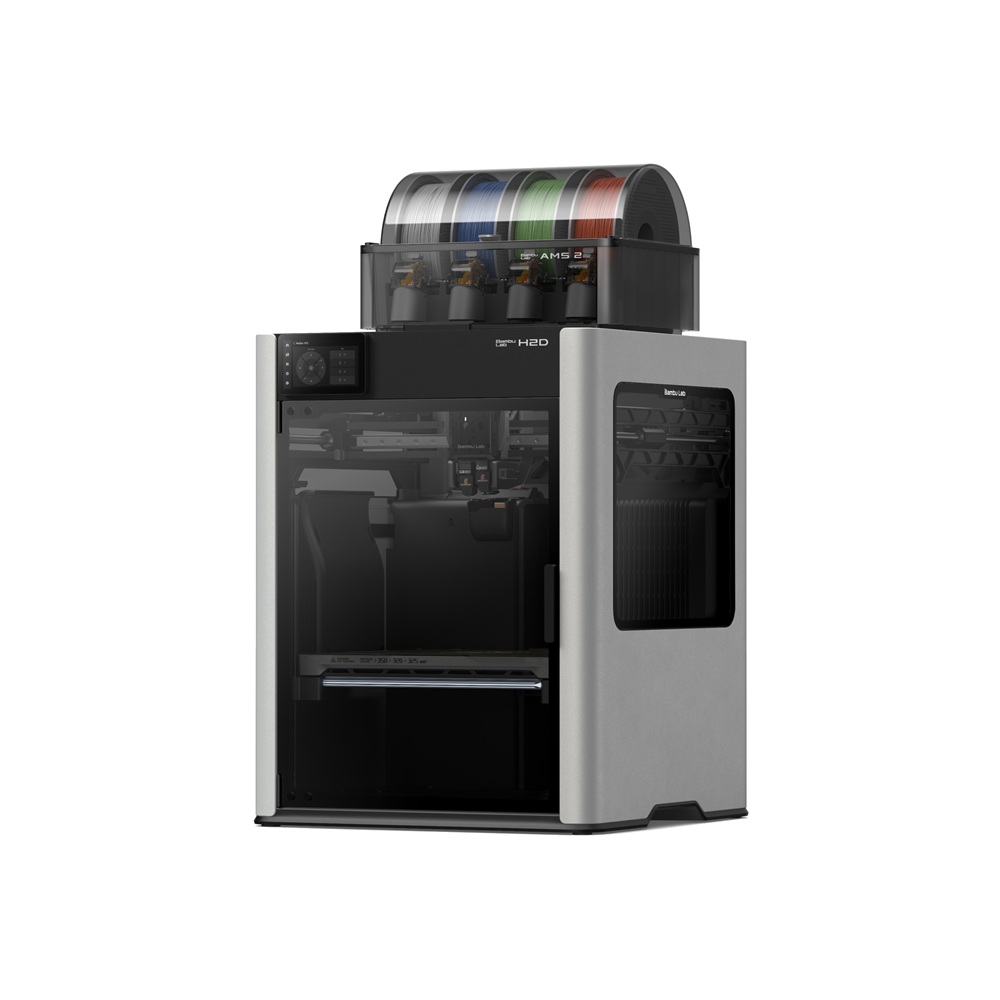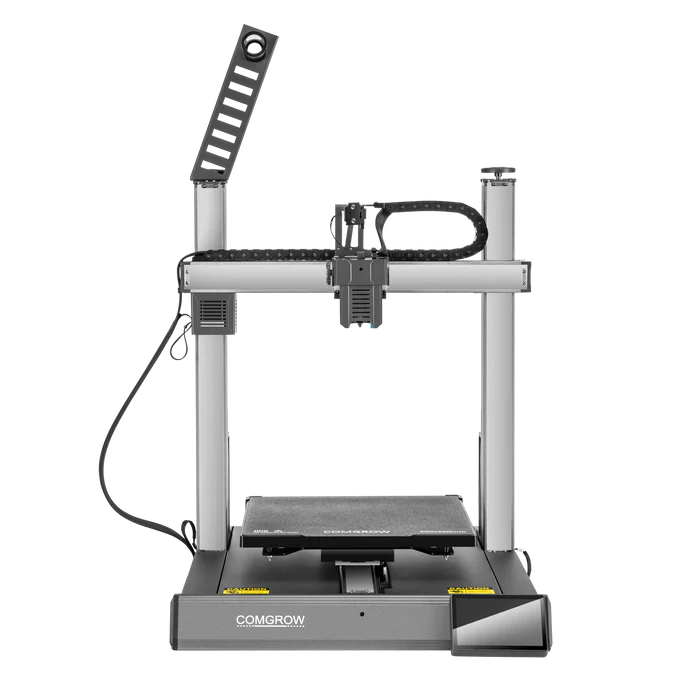Compare H2D vs Comgrow T300
Comparison between the best 3D printers
Choose the best 3D printer at the best price. The cheapest 3D printers are here.
Buy a 3D printer here with 3D Fila.
 |
 |
|
| Model | H2D |
Comgrow T300 |
| Printing Material | Filament | Filament |
| Buy Filament for Bambu Lab H2D | Buy Filament forSovol Comgrow T300 | |
| Estimated price | $1899,00 | $449,00 |
| Manufacturer | Bambu Lab | Sovol |
| Release Year | 2025 | 2024 |
| Print Volume [mm] | 350x320x325 | 300x300x350 |
| Printer Size [mm] | 492x514x626 | 503x631x831 |
| Weight [kg] | 42,3 | 17 |
| Power Loss Recovery | YES | YES |
| Enclosed printer | YES | NO |
| Bed Leveling | Automatic | Automatic |
| Filament End Sensor | YES | YES |
| Bed type | Heated | Heated |
| Power supply system | Direct Drive | Direct Drive |
| Standard nozzle | 0,4 | 0,4 |
| Maximum Nozzle Temperature [°C] | 350 | 300 |
| Maximum Bed Temperature [°C] | 120 | 100 |
| Maximum printing speed [mm/s] | 600 | 600 |
| Filament holder | YES | YES |
| Camera for supervision | YES | YES |
| Recommended filaments | PLA, PETG, ABS, ASA, TPU, PVA, Nylon (PA) | PLA, PETG, PET, TPU, PA, ASA, PC, PLA CE, PA-CF, PET-CF |
| Recommended slicers | Bambu Studio | Bambu Studio, Super Slicer, Cura, Prusa Slicer, Orca Slicer |
| Maximum Resolution [mm] | 0,01 | 0,1 |
| Processor | 64 bit | |
| Display | Touchscreen 5'' | Touchscreen 5'' |
| Power Supply | 150 W | |
| Connectivity | Wifi, Bambu bus, Cartão SD | USB, WiFi |
| Operating systems | Windows, Mac, Linux | Windows, Linux, Macbook |
| Date of registration in the system | 2025-03-31 | 2024-05-10 |
| Release date | 2025 | 2024 |
| Extra features | Bambu Labs H2D combines high-speed 3D printing with a chamber heated up to 65 °C, dual extrusion with automatic nozzle switching, an AMS for filament drying and exchange, and AI sensors that detect failures. It offers optional laser and digital cutting capabilities, features intelligent calibration through computer vision, vibration control, enhanced fire safety, and real-time camera monitoring. | The Sovol Comgrow T300 printer stands out for its technological innovations and advanced features. With a print size of 300mm300mm350mm, the T300 offers true linear rails on all axes, ensuring greater stability. Its Klipper-based intelligent core and 64-bit microcomputer increase printing speed and quality through pressure advancement and input shaping. The extruder with a gear ratio of 6.5:1 allows for more precise material control, optimizing the printing of flexible materials. In addition, the T300 features a rapid filament cooling system with a high-speed fan and a circular duct piece that improves cooling efficiency. With a 4.3-inch high-refresh rate touchscreen and an 81-point automatic leveling system, the T300 simplifies the preparation and execution of 3D prints. |
| Support for multiple colors and materials (AMS and CFS) | YES | NO |
Notes * |
||
| Cost-benefit | 7 / 10 | 8 / 10 |
| Hardware | 8 / 10 | 3.6 / 10 |
| Tela | . | . |
| Print volume | 4 / 10 | 4 / 10 |
| Performance | 5 / 10 | 5 / 10 |
Conclusion |
| In comparing the Bambu Lab H2D to the Sovol Comgrow T300, several key differences arise that cater to different user needs and preferences. Firstly, the Bambu Lab H2D is significantly more expensive but offers a range of advanced features that justify its cost for professional-grade applications. This model boasts a larger print volume, higher maximum nozzle and bed temperatures, and superior print resolution, along with advanced capabilities like dual extrusion and AI failure detection. The inclusion of an enclosed design also enhances safety and print quality, particularly for materials that require more controlled environments. Conversely, the Sovol Comgrow T300 presents a more budget-friendly option without compromising core functionality. It incorporates a robust feature set, including linear rails for stability, an intelligent core for improved print quality, and an efficient cooling system, making it suitable for hobbyists and entry-level users. While it lacks some of the specialized features of the H2D, it excels in cost-effectiveness and user-friendly elements, such as its automatic leveling system and touch interface. Ultimately, the choice between these two printers hinges on individual requirements. For those seeking high-speed, high-quality production capabilities and advanced features, the H2D is a clear contender. However, for users who prioritize affordability and essential performance without the frills, the Comgrow T300 stands out as a solid option. Each printer caters to different segments of the 3D printing market, allowing users to select based on their specific budget and printing needs. |

